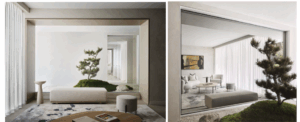In today’s fast-moving digital world, home design businesses are no longer judged only by the quality of their creative vision. Clients expect smooth communication, faster project delivery, and seamless collaboration across every stage of the design process. While stunning interiors remain at the core of your work, the way you run your operations can be just as important as the spaces you create. This is where automation comes in and why forward-thinking design firms are embracing workflow tools to simplify their processes, save time, and focus on what they do best.
The Rising Demand for Efficiency in Home Design
Home design is both an art and a business. Designers balance creative work with countless practical tasks: sourcing materials, managing vendor relationships, scheduling consultations, updating clients, and coordinating contractors. Each of these moving parts requires attention, and together they can become overwhelming.
Traditionally, design firms relied on manual processes, paper-based systems, or disjointed digital tools. These methods often led to wasted hours, overlooked details, and frustrated clients. In a competitive market, inefficiency can quickly become a dealbreaker.
Automation addresses this challenge by streamlining repetitive tasks and integrating the many tools businesses already use. From automatically scheduling appointments to keeping project files organized, automation ensures the back end of a design business runs as beautifully as the spaces it creates.
What Is Workflow Automation?
Workflow automation is the practice of using software to connect tools, manage tasks, and eliminate unnecessary manual work. Imagine you receive a new lead through your website. Instead of manually adding them to a spreadsheet, emailing them back, and creating a calendar reminder, automation can handle all of these steps in seconds.
Platforms like n8n make this possible. N8n is an open-source workflow automation tool that allows businesses to design custom workflows without being locked into a rigid system. Unlike many “plug-and-play” tools that offer limited integrations, n8n connects to hundreds of apps and services. This flexibility means design firms can create solutions tailored exactly to their needs.
For example, you can:
- Automate client onboarding: Send a welcome email, schedule an introductory call, and share a design questionnaire automatically.
- Streamline vendor management: Connect supplier catalogs to your project management system, ensuring real-time updates on product availability.
- Organize design assets: Automatically tag and store design files in cloud storage for quick access by your team.
- Improve communication: Send automated progress updates to clients at specific milestones.
The result is not just efficiency, but also consistency and professionalism that clients notice and appreciate.
Why Automation Matters for Home Design Businesses
- Time Savings
Every hour spent on manual data entry or repetitive tasks is an hour that could be spent on design work. Automation frees up valuable time for creative tasks, client meetings, and business growth. - Error Reduction
Manual processes are prone to human error—missed appointments, forgotten follow-ups, or misplaced files. Automated workflows reduce these mistakes, ensuring smoother projects and happier clients. - Scalability
As a design firm grows, so does the complexity of its operations. Without automation, scaling often means hiring more administrative staff. With automation, you can grow your client base without dramatically increasing overhead. - Enhanced Client Experience
From timely updates to streamlined communication, automation makes clients feel cared for. In an industry where reputation is everything, this can set a design firm apart from competitors.
The Role of Experts in Automation
While n8n is powerful, building effective workflows requires strategy and technical know-how. Each business has unique needs, and setting up automations incorrectly can lead to confusion rather than clarity. This is why many businesses choose to hire n8n developers who specialize in creating customized solutions.
These developers understand both the technical side of automation and the practical side of business operations. For a home design business, that means having workflows that are not only functional but also aligned with how designers, clients, and vendors actually work together.
Overcoming Common Concerns
Some home design professionals hesitate to adopt automation, fearing it will be too complex or that it might replace the “human touch.” In reality, the opposite is true. Automation handles the behind-the-scenes work so that designers can spend more time engaging with clients and focusing on creative challenges.
Others worry about cost. While there is an upfront investment in building workflows, the long-term savings in time and reduced administrative overhead often far outweigh the initial expense. In fact, many businesses see a return on investment within months.
The Future of Home Design and Automation
The future of home design is undeniably digital. Just as clients expect their homes to be “smart,” they increasingly expect design businesses to operate with the same efficiency and intelligence. Automation tools like n8n bridge this gap, turning traditional design firms into modern, tech-savvy businesses ready for the next decade.
By integrating automation today, home design professionals can position themselves as leaders in both creativity and innovation. The firms that embrace this shift will not only survive but thrive in a competitive market.
Final Thoughts
At its core, home design is about creating spaces that improve people’s lives. But behind every beautiful room is a business that needs to run smoothly. Automation ensures that operations don’t hold back creativity. From managing clients and vendors to streamlining communication and file management, the potential is enormous.
The key is not just adopting automation tools, but doing so strategically. With expert guidance, design firms can build workflows that support their unique processes and free up time for what really matters: design.






